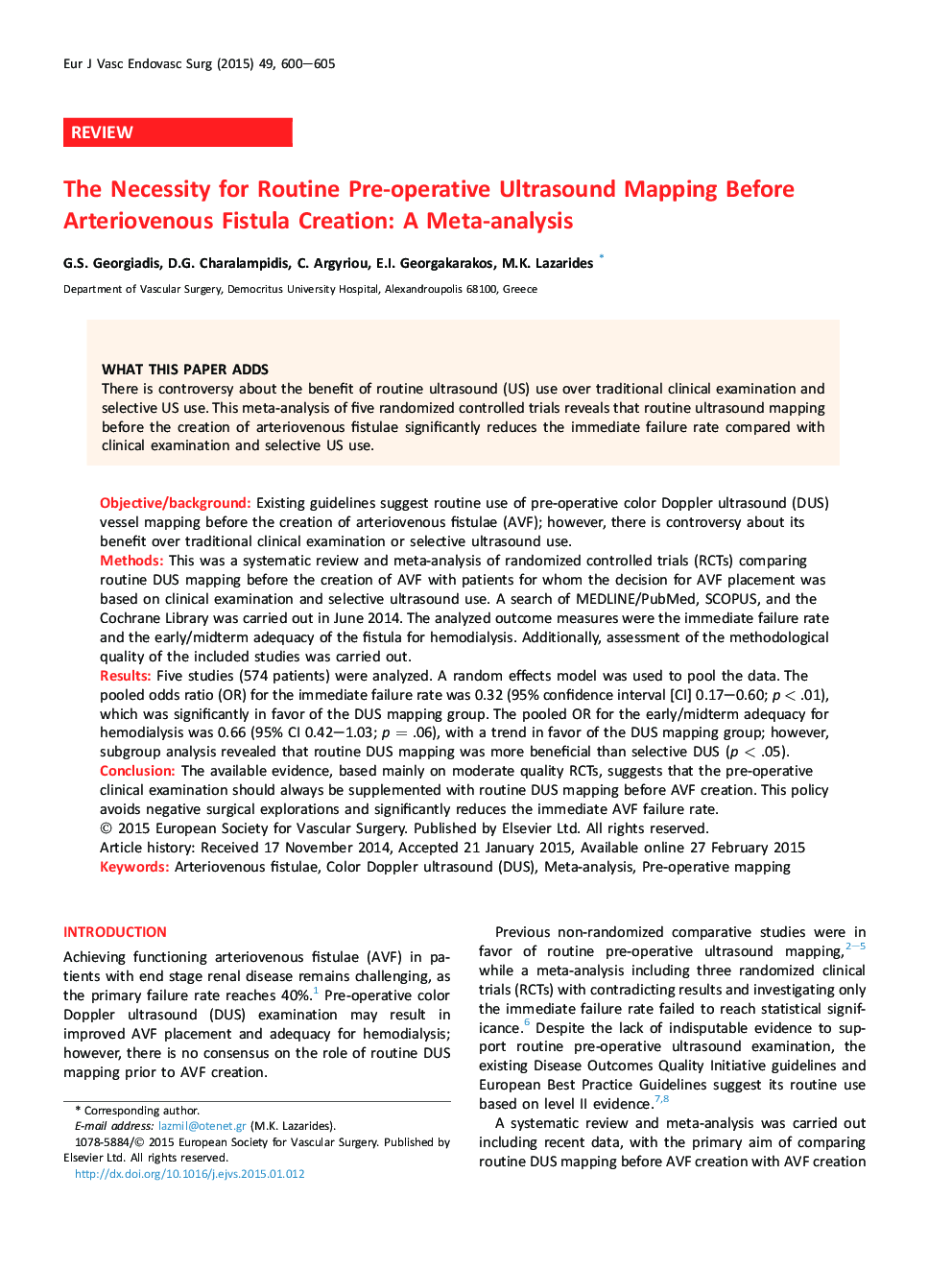| Article ID | Journal | Published Year | Pages | File Type |
|---|---|---|---|---|
| 2911930 | European Journal of Vascular and Endovascular Surgery | 2015 | 6 Pages |
Objective/backgroundExisting guidelines suggest routine use of pre-operative color Doppler ultrasound (DUS) vessel mapping before the creation of arteriovenous fistulae (AVF); however, there is controversy about its benefit over traditional clinical examination or selective ultrasound use.MethodsThis was a systematic review and meta-analysis of randomized controlled trials (RCTs) comparing routine DUS mapping before the creation of AVF with patients for whom the decision for AVF placement was based on clinical examination and selective ultrasound use. A search of MEDLINE/PubMed, SCOPUS, and the Cochrane Library was carried out in June 2014. The analyzed outcome measures were the immediate failure rate and the early/midterm adequacy of the fistula for hemodialysis. Additionally, assessment of the methodological quality of the included studies was carried out.ResultsFive studies (574 patients) were analyzed. A random effects model was used to pool the data. The pooled odds ratio (OR) for the immediate failure rate was 0.32 (95% confidence interval [CI] 0.17–0.60; p < .01), which was significantly in favor of the DUS mapping group. The pooled OR for the early/midterm adequacy for hemodialysis was 0.66 (95% CI 0.42–1.03; p = .06), with a trend in favor of the DUS mapping group; however, subgroup analysis revealed that routine DUS mapping was more beneficial than selective DUS (p < .05).ConclusionThe available evidence, based mainly on moderate quality RCTs, suggests that the pre-operative clinical examination should always be supplemented with routine DUS mapping before AVF creation. This policy avoids negative surgical explorations and significantly reduces the immediate AVF failure rate.
